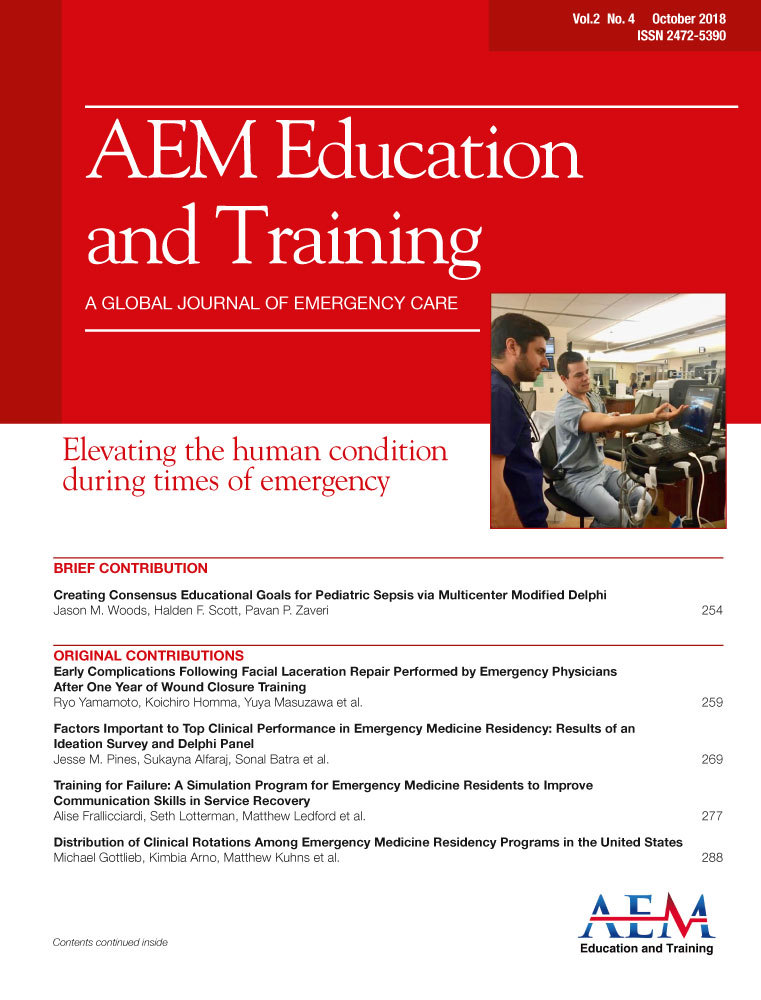Trainees and Faculty Healing Together: A Resident- and Faculty-directed Wellness Initiative for Emergency Medicine Residents
Background
Nearly half of the nearly 900,000 practicing physicians in the United States report symptoms of burnout, with nearly 70% of emergency physicians endorsing burnout symptoms.1, 2 Burnout is characterized by emotional exhaustion, physical fatigue, and cognitive weariness, which may lead to feelings of depersonalization and reduced accomplishment.3 In 2017, the Accreditation Council for Graduate Medical Education formally recognized the importance of well-being in trainees, with many emergency medicine (EM) programs seeking curriculum adaptations to combat burnout.4, 5 Recent work by Williamson and colleagues6 presented an innovative framework for a multimodal longitudinal EM wellness curriculum. We sought to build on this, by exploring whether a multimodal residency wellness program would benefit by having trainees themselves play a critical role in the design and implementation of such initiatives. Such a wellness curriculum leveraging a key role of trainees as cofacilitators with faculty may provide additional insight into unique trainee burnout needs and coping strategies.
Explanation
This is a case report of an all day wellness initiative “theme day” involving paired faculty and EM resident leaders performed at a dual campus 4-year EM residency program, which was approved by the Columbia University Institutional Review Board. Topics for the initiative were guided by existing literature on EM wellness curricula and by resident led focus groups. The theme day commenced with two lectures given by EM faculty on existing burnout research and the adverse outcomes associated with burnout. Following this, all residents rotated through five stations on clinician wellness led by a peer resident facilitator and faculty colead. The five stations included a session on narrative medicine, a module on burnout assessment, a needs analysis section during which residents shared personal strategies for combating burnout, and a session on communication strategies including simulation and case scenarios. The day concluded with a resident-faculty–led group social activity and open forum for reflection.
Description
At the end of the session, participants were asked to rate the applicability of each station and overall feedback on the teaching structure of resident and faculty coleads. A total of 24 of 25 residents (96%) responded to the survey. A total of 87% of the residents “strongly agreed” with the statement “I enjoyed the structure of the wellness conference day.” Additionally, 75% “strongly agreed” with the statement that “the wellness theme day was valuable.” All five session topics were reported by a majority (74.3%) of residents as “extremely applicable and useful for my practice.” Finally, open responses provided a number of potential specific targets for combatting burnout including those related to stacked shift scheduling, improved cross-department communication initiatives, and faculty mentorship.
Clinician burnout is a vital topic impacting clinician well-being and patient care. This case report presents a resident-led wellness conference day, highlighting the importance of involving both senior faculty experts on wellness discussions and clinicians early in their training on seeking unique and critical insight into burnout strategies and initiatives. Future work aimed at multimodal longitudinal approaches to wellness beginning at the residency level may ultimately lead to long-lasting positive efforts to reduce clinician burnout and improve career longevity and patient care.




